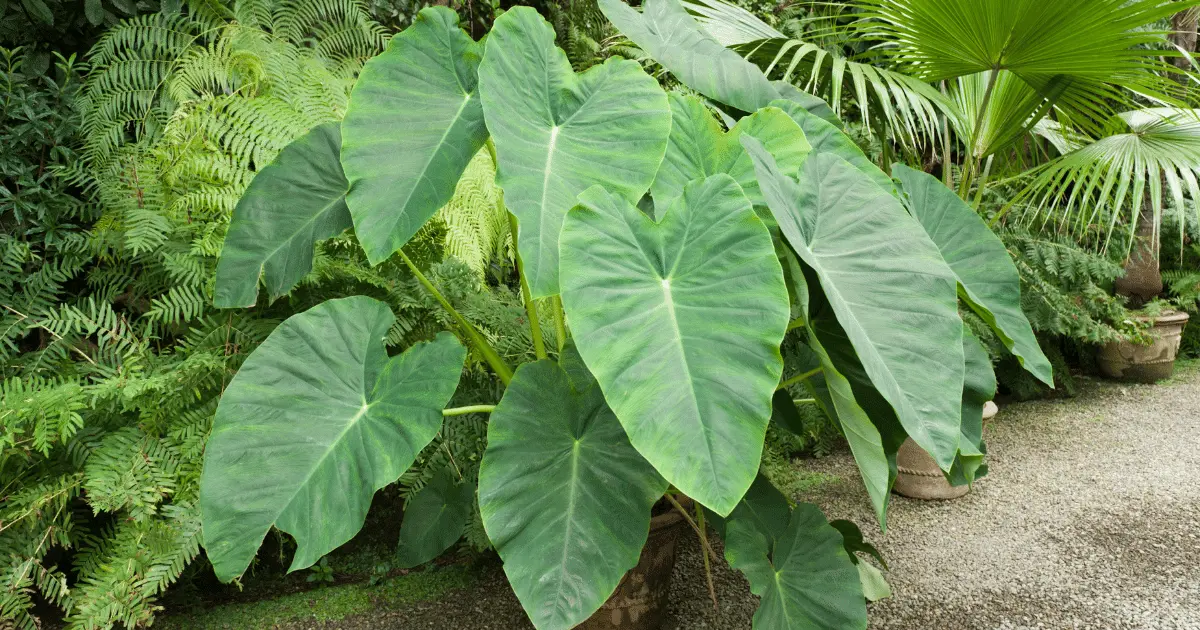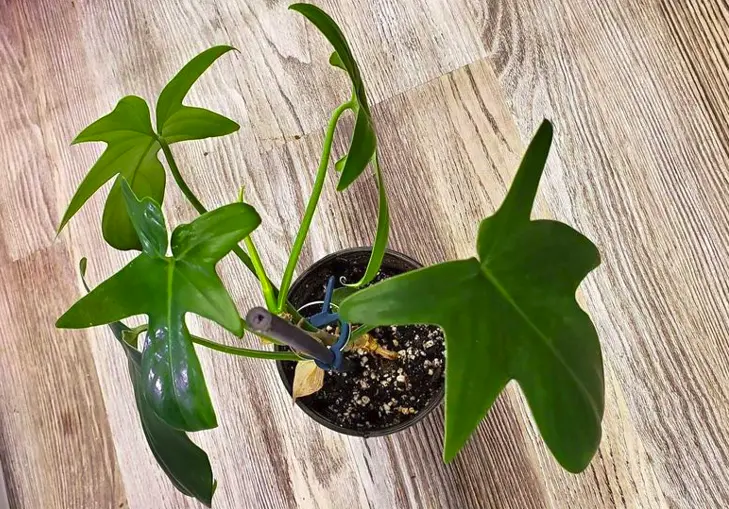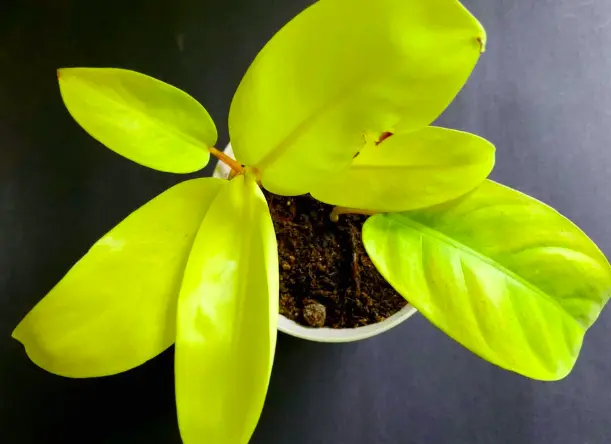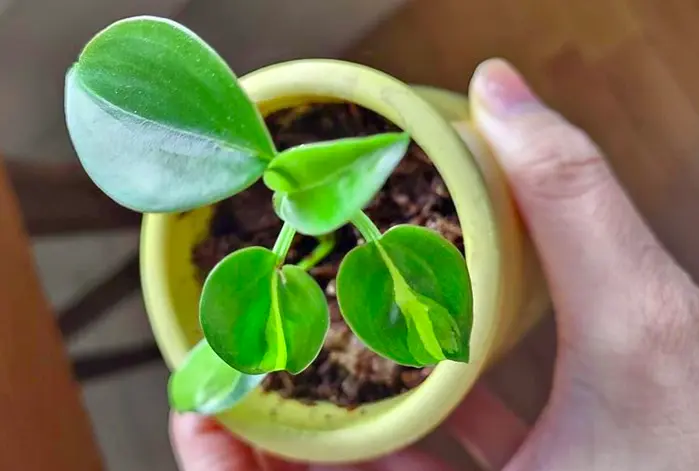Philodendrons are beautiful houseplants that can add life and color to any room. The most stunning of these plants is the variegated philodendron, which boasts bright green leaves with splashes of red or pink.
However, some plants are trickier to care for than others, and the variegated philodendron falls into this category—though it’s not nearly as challenging as many might think! But if you’re lucky enough to get your hands on one of these beauties, what should you do with it?
Well, look no further, as this guide will cover all you need to know about variegated philodendron plants, including growing and caring for them.
What is a Philodendron?

A philodendron is a flowering plant that grows in South and Central American rainforests. There are over 200 species of philodendron, but the most common in home gardens are those with variegated leaves.
In the case of variegated philodendrons, this usually means a base color, such as green or brown, with white, red, yellow, or cream stripes. Variegated philodendrons have aerial roots that clasp the bark of trees, enabling them to grow to heights of more than 20 feet! The leaves of these plants change form as they develop, reaching a size of a dinner plate as they develop.
Most philodendrons thrive near a window that gets enough light but isn’t burnt by the sun all day. (Remember, these succulents live in the tropics and are accustomed to some shade.) You can grow your philodendron in a garden in regions where the temperature doesn’t fall below 60 degrees.
Types of Philodendrons (Varieties)
The variegated philodendron has several benefits, including resilience, ease of propagation, easy maintenance, and robust growth. Furthermore, it has various colors, textures, leaf forms, growth patterns, and sizes. Furthermore, this South American blooming plant has over 400 known species and many hybrids and cultivars.
The following are a few examples of variegated philodendron varieties:
Philodendron Pedatum

This remarkable climbing plant features green leaves that alter shape with maturity: they start tiny and acquire deep lobes as they grow, reaching up to 9 inches long. The Pedatum is a creeper with an unusual, open structure that may reach heights of more than three feet. It is resilient, evergreen inside, and thrives with minimal care.
Heartleaf Philodendron (Hederaceum)

This lovely Philodendron’s trailing tendrils delight hanging baskets and windowsills worldwide. In terms of light and humidity, this plant is an ideal choice for beginners because it can handle a wide range of conditions. The heart-shaped, fast-growing leaves of the Hederaceum are 2-3 inches wide while trailing, but they can grow to be over 8 inches in diameter if allowed to climb.
Philodendron ‘Moonlight’

Lime-green, electrifying leaves distinguish this clump-forming. As this plant matures, new leaves turn golden and progressively darken with age. Bright indirect light will maintain the leaves of the Moonlight vibrantly brilliant. It’s a fast-growing shrub that doesn’t require support and grows less than two feet tall.
‘Lemon Lime’ Philodendron

This yellow-green variety is not as widely recognized as it should be. It features striking leaves and the fundamental qualities of the ordinary Heart-leaved Philodendron, making it a worthy addition to your collection. Its color is striking as a waterfall of vibrant leaves pouring from a densely planted hanging pot; the Lemon Lime demands the same care as its more traditional sibling, the Heart-leaved Philodendron.
Philodendron Brandtianum

In ideal conditions, this evergreen Philodendron climbs and proliferates rapidly. The plant looks great in a hanging basket or as a table centerpiece with anchored support. Also, because it retains its variegation in low light, Philodendron Brandtianum is an excellent choice for darker settings. Each olive-colored leaf has a mesmerizing pattern of silvery, broad bands between its veins, which draws attention to the Brandtianum. Otherwise, it’s very similar to the typical vining Heartleaf.
Philodendron ‘Brasil’

This cultivar has a luxurious appearance yet is extremely easy to maintain. The Philodendron Brasil adds hypnotic lime-green center strips with randomly distributed yellow “painted” splotches over its leaves while retaining the standard Heart-hardiness.
The vines look beautiful, cascading from a hanging basket in any light setting. The plant is cheap and easy to find. Although the Philodendron Brasil can withstand medium light, it requires brighter circumstances than other varieties to show off its beautiful variegation. In low light, it also switches to all green.
Propagating a Variegated Philodendron
Philodendron, also known as foxtail or split-leaf, is some of the most popular houseplants because they’re so easy to grow and look great in any room of the house. Here are two alternative methods for propagating variegated philodendrons via stem cutting:
Propagating Stem Cutting in Water
Five easy steps you can use to propagate a variegated philodendron plant in water as follows:
- Cut the stem and take a section containing a node and new growth.
- To check root growth, immerse the stem in a glass of water or a transparent container.
- Preserve the stem cutting by placing it in a light, shaded area with enough ventilation.
- To avoid bacterial disease, replace the water every 3-5 days.
- Transplant the stem cutting. After two weeks, check for growth and place the cutting in a sterile potting mix if the developing roots are one inch or longer.
Propagating Stem Cutting in Soil
Cutting the stem and placing it in the soil is the most convenient technique to propagate a variegated Philodendron. The best period to propagate a variegated philodendron is spring to early summer. The following are the steps to get started.
- Take your stem cutting and search for a good section of the stem of the variegated philodendron with fresh growth and a few nodes. Use clean gardening shears to cut just below the nodes.
- Plant your stem cutting in standard potting soil.
- Nurture your stem cutting by maintaining the soil, keeping it wet, and ensuring the temperature is between 70 and 90°F.
- Turn the container from time to time to rotate your stem cutting and guarantee that your variegated philodendron develops equally on all sides.
Caring for Variegated Philodendron
Growing your plants can be incredibly rewarding, not only because you’re saving money on store-bought greenery but also because it’s relaxing to water your plants, watch them grow, and keep them healthy. Let’s look at how you can successfully care for this uniquely colored houseplant and ensure it continues to thrive in your home or office.
Soil
You must always keep the soil moist but not wet. It is also ideal to have a pH range of 5.5 to 6.5 on acidic soil. If the soil is too alkaline or dry, the variegation will fade. Too much water can cause brown spotting or rot on the leaves.
Sunlight
The variegated philodendron is an excellent plant because it can thrive in low light conditions, so you don’t have to worry about dying in your windowless office. These plants prefer indirect sunlight or even no direct sunlight at all. Philodendrons also need a moist environment, but if the humidity gets too high, they will start dropping their leaves.
Water
There is no stipulation on how frequently you should water your variegated philodendron. However, you’ll have to feel the top one or two inches of its soil to determine whether it’s dry and in need of water. Allow it to dry before watering. Overwatering will slow down their growth. Your plant will most likely require more moisture in the summer and spring months and less in the fall and winter.
Fertilizer
Philodendrons are generally considered low-maintenance plants. The most common way to fertilize philodendrons is with a houseplant fertilizer, which contains the significant macro-nutrients phosphorus, potassium, and nitrogen, as well as micronutrients such as iron, zinc, copper, manganese, and boron. However, in some cases, it may be necessary to fertilize philodendrons with a more specialized fertilizer that addresses issues such as high acidity or iron deficiencies.
Potting and Repotting
When it’s time to repot, use potting soil specifically made for plants like Variegated Philodendrons. These plants can rot if they come in contact with water, so ensure plenty of drainage holes in the pot. If you need to know if your plant needs to be repotted, this is an excellent time to ask an expert.
Common Pests and Diseases
The variegated philodendron is resistant to disease and pests. Here are some common pests and infections, as well as treatment options.
Aphids
Aphids are attracted to flower buds and new branches, leaving unsightly white and black splotches as they feed on the sap. Spray the plant with neem oil, an insecticidal soapy spray, or horticultural oil to eliminate the aphids.
Spider Mites
Spider mites are an unwelcome yet common pest on houseplants, particularly variegated philodendrons. Begin by thoroughly scrubbing every nook and corner of your variegated philodendron to eradicate the spider mites. You can do this in a bathtub, a sink, or outside. If that fails, suffocate the spider mites with neem oil, insecticidal soap, or horticultural oil.
Mealybugs
These parasites will damage your variegated philodendron by draining sap through its sucking tubes. We propose applying neem oil to your houseplants once a month as a prophylactic precaution against numerous ailments. Ensure to dampen the neem and spray only in cool weather.
Brown Leaf
If you notice browning tips on your variegated philodendron variegated’s leaves, make sure the humidity level in your house is not too low. If the sun is too harsh on your plant, use curtains to shade it. As little fertilizer as feasible should be used.
Yellow Leaves
If you see yellowing leaves on your variegated philodendron, you must investigate any recent changes in your care methods or the weather. Some of the causes of yellowing leaves include:
- Over-fertilizing
- Overwatering
- Under-fertilizing
- Too much light
- Pests
- A lack of light
- Temperature changes, and
- Root damage.
The care of variegated philodendrons is the same as that of other house plants. Keep these plants in a warm, humid environment with plenty of indirect light. Variegated philodendrons can take up to six years before they bloom; hence, ensure to water them twice a week and apply organic fertilizer every two weeks.
